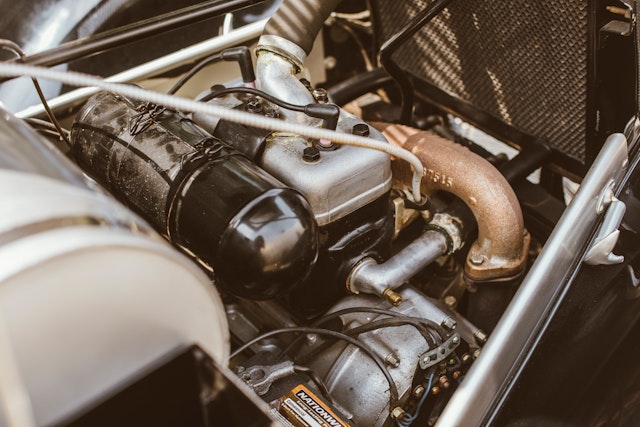What’s the Difference Between a Supercharger and a Turbocharger?

Superchargers and turbochargers may sound like pretty much the same thing, and even though they are similar in what they offer to a vehicle’s performance - more power - they’re two distinctly different tools you can add to your classic car. Both of these offer ways to get more oomph out of your car’s engine, but there are some tradeoffs with each option.
Let’s start with the similarities: Both are air compressors that force more oxygen into the system to help give an engine that much-desired extra boost. (Technically, they are both known as forced induction systems.) Beyond that is where things start to get interesting. Which one will work best for you? Let’s find out.
How Does a Supercharger Work?
Superchargers have been used on engines for a century; the first supercharged production debuted in 1921 (thanks Mercedes!) and went into production a couple years later. Suffice to say, there’s been a lot of progress in supercharger technology since then but the core operation is the same: they bolt directly onto the engine and are driven by power from the crankshaft using an added belt, chain or gear.
The supercharger uses that engine power to essentially double the amount of oxygen pushing into the system for the fuel to use, and that can help ramp the engine’s horsepower by up to 30-40%. This gives you more power out of roughly the same amount of fuel, but on the whole, you’re not going to save too much at the pump.
Adding a supercharger to a vehicle is the best way to get extra power into an engine quickly with zero lag time, since its operation is tied into the operation of the engine itself. That said, because superchargers do depend on the running engine to operate, it’s a less efficient process than a turbocharger. They are also, on the whole, more expensive than a turbocharger, but they’re also easier to install.
If you want power to your gas pedal as soon as you hit it, especially at lower speeds or from a standstill, and you’re willing to trade off in efficiency and price, then a supercharger is for you.
How Does a Turbocharger Work?
Turbocharger = turbine. That’s the best way to remember the main difference between this and a supercharger. Whereas the supercharger is at the front end of the internal combustion system, the turbocharger does its work closer to the end of the process, using the car’s exhaust stream to spin the turbine, turning that potentially “wasted” energy into added power.
Because the turbocharger operates independently of the engine, it’s far more efficient in terms of fuel usage, but the downside is that it provides most of its boost when the engine is pushing more exhaust at higher RPMs. So if you want added efficiency when you’re gliding along the highway, pick the turbo, but if you need to chirp the tires off the line, you won’t get any help here.
Choosing a supercharger vs turbocharger
Do you want immediate energy or fuel efficiency? Both chargers add varying levels and types of power. A supercharger uses fuel to get more power, but does it quickly and with more direct effect. The turbocharger powers the engine more slowly and at higher RPMs, but it adds strength while using less fuel. Superchargers are easier to bolt on directly, while turbochargers require work on the exhaust and intake.
Overall, turbochargers are used much more often by manufacturers nowadays due to the added fuel efficiency and better emissions, but for high-performance or muscle cars, we think the supercharger is the way to go for immediate power.
You could, alternately, look for a car that offered either one as a factory option. Superchargers have been used on cars for a century, while the modern age of factory-installed turbo use started in the late 70’s/early 80’s so there are plenty of classic cars that have already made the decision for you. (Some newer vehicles use multiple turbos, while a few actually have both a super- and turbocharger used in alternating operation.)
No matter which one you pick, they both sound cool when you’re telling your friends you have a supercharged or turbocharged engine. Which, as we all know, is its own reward.
